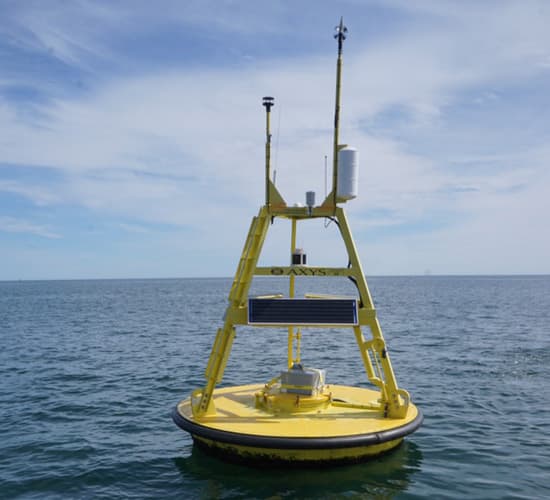Ocean Surface Platform Monitoring
Ocean surface buoys and platforms form the backbone of most oceanographic, marine transportation and surveillance systems around the world. Ocean platforms carry sophisticated scientific and operational instrumentation which is very expensive and worth protecting. Xeos beacons are designed to monitor the location of valuable surface assets in remote locations. Our beacons can be programmed to trigger an alarm signal, should a buoy or mooring drift outside of a pre-set “Watch Circle”, thus alerting equipment owners of the issue and enabling them to mobilize and recover the valuable system before it is destroyed or lost.
While the instruments on an ocean platform collect data on temperature, salinity, velocity, turbidity, wave height, etc., being able to remotely access the data is critical. Ocean surface platforms are often deployed for extended periods of time and not often revisited to collect data. The new Nemo-S is developed specifically for surface platforms as a bidirectional marine data relay to allow important data to be collected remotely through Iridium Short Burst Data (SBD) communication. A communication link between the end user and their oceanographic devices deployed on a sea level platform, ship, or autonomous vehicle allows data to be relayed to and from remote equipment.

In addition to tracking and monitoring surface buoys, Xeos has recently developed a line of new GNSS-based wave height sensors for measuring wave height, direction and period on surface buoys. Using this new GPS and GLONASS signal-based approach, wave height and direction statistics can now be measured to an accuracy of less than 1%. With built-in satellite, cellular or radio communications, critical wave information can be reported from anywhere in the world.
